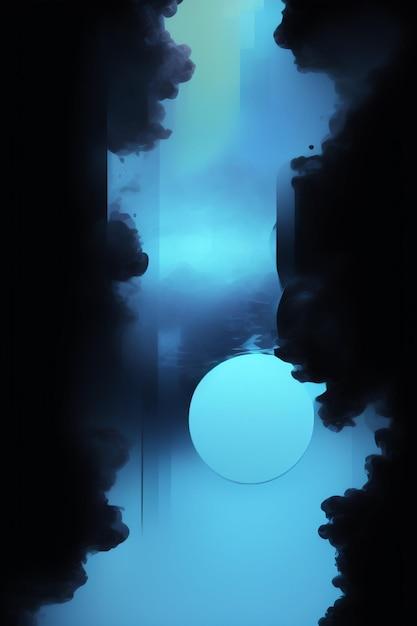In today’s digital age, where gadgets and devices constantly evolve, the terms used to describe screen resolutions can often leave us puzzled. With buzzwords like Full HD, 1080p, 4K, and UHD being thrown around, it’s easy to get confused and wonder if they all mean the same thing. After all, we all want clarity and crispness in our visual experience.
Let’s dive into the world of screen resolutions and shed some light on the difference between Full HD and 1080p. We’ll also uncover the truth about whether 1080p looks blurry on 4K and whether HD is better than 4K on iPhones. So, whether you’re a tech enthusiast, a movie buff, or simply someone curious about screen resolutions, keep reading to unravel the confusion around these terms and make an informed decision about the visual quality that suits your needs in 2023.
Is Full HD the Same as 1080p
When it comes to high-definition displays, the terms can get a bit confusing. One of the most common questions is whether Full HD is the same as 1080p. So, let’s settle this once and for all!
Understanding the Terminology
To clear things up, let’s start with some definitions. “Full HD” refers to a display resolution of 1920 pixels by 1080 pixels. On the other hand, “1080p” is a shorthand way of saying a resolution of 1920×1080 as well. You see, they both denote the same number of pixels, so it’s safe to say they are effectively the same in terms of resolution.
The Difference Lurks in the Details
Though Full HD and 1080p have the same resolution, there can be subtle differences that set them apart. For instance, the term “Full HD” suggests that the display is capable of showcasing a complete 1080p image without any compromises. On the other hand, “1080p” may be used more broadly to refer to any content or hardware that supports the 1920×1080 resolution, even if it’s not considered “Full HD.”
Bottom Line: Tomayto, Tomahto
Whether you call it Full HD or 1080p, you’re essentially talking about the same thing—a display with a resolution of 1920×1080 pixels. The slight disparity lies in how the terms are used and interpreted in different contexts. It’s a classic case of “tomayto, tomahto”—just two ways of saying the same thing.
The Rise of UHD and 4K
Now that we’ve cleared up the Full HD vs. 1080p debate, it’s worth mentioning that technology doesn’t stand still. As time goes on, higher resolutions, like UHD (Ultra High Definition) and 4K, have become more common. These resolutions offer even crisper and more detailed visuals than Full HD or 1080p. However, that’s a discussion for another day!
Wrap-Up
So, to answer the burning question: Is Full HD the same as 1080p? Yes, they are essentially interchangeable terms that represent a display resolution of 1920×1080 pixels. Whether you prefer one name or the other, the end result is the same stunning high-definition experience. Now that the semantics are out of the way, you can confidently discuss display resolutions without breaking a sweat. Cheers to clarity and the beauty of high-definition!
FAQ: Is Full HD the Same as 1080p
Welcome to our FAQ section, where we answer all your burning questions about Full HD and 1080p! Don’t worry, we’ll help clear up any confusion you may have. Let’s get started:
Does 1080p Look Blurry on 4K
Ah, the age-old question. While 1080p content may not look as sharp as native 4K on a 4K display, it doesn’t necessarily mean it’ll look blurry. Thanks to upscaling technology, many modern 4K TVs can improve the visual quality of lower-resolution content. However, keep in mind that the overall sharpness and level of detail won’t reach native 4K levels.
Is HD Better than 4K on iPhone
When it comes to watching content on your iPhone, you might be torn between HD and 4K. The true answer depends on your specific device. While iPhones offer stunning displays, not all models support 4K resolution. In such cases, HD content will likely look just as good, if not slightly better, on your iPhone.
Why Does 4K Look Worse Than 1080p
Now, this might puzzle you. How is it possible for 4K to sometimes look worse than 1080p? Well, there can be several reasons. One common explanation lies in the quality of the source material. If the original content wasn’t captured or mastered in high resolution, the upscaled 4K version may not offer significant improvements. Additionally, factors like poor compression or insufficient bandwidth can also contribute to a less-than-stellar 4K experience.
What’s Better: 4K or UHD
Ah, the eternal debate. 4K and UHD are often used interchangeably, but there’s a subtle difference. While both terms refer to a resolution of 3840×2160, 4K is commonly used in the cinema industry, while UHD (Ultra High Definition) is more consumer-oriented. So, in essence, they offer the same impressive level of detail and clarity. It’s just a matter of industry jargon.
Is Full HD Still Good
Absolutely! While Full HD (1920×1080) can’t compete with the razor-sharpness of 4K, it doesn’t mean Full HD is no longer good. In fact, for smaller screens or budget-conscious consumers, Full HD can still provide a fantastic viewing experience. Don’t let the fancy new resolutions fool you; Full HD continues to hold its own.
Why Is 1080p Full HD
Ah, the mystery of the “Full HD” designation. Well, my friend, it’s quite simple. Full HD earns its name by providing the maximum resolution available for HD content, which is 1080p (1920×1080 pixels). So, when you see something labeled as Full HD, you know it’s giving you all the HD goodness you can handle!
Is 1080p Full HD
Yes! You’ve got it. 1080p is indeed Full HD. With a resolution of 1920×1080 pixels, it offers a crisp and detailed image. So, whether you’re watching movies, playing video games, or just indulging in some binge-watching, rest assured that 1080p will deliver high-quality visuals.
Why Does 1080p Look Blurry on 4K
Ah, the battle of resolutions continues! When you upscale 1080p content on a 4K display, it may appear slightly blurry or less sharp. The reason lies in the difference in pixel density. A lone 1080p pixel gets stretched across multiple 4K pixels during the upscaling process, leading to a decrease in overall clarity. But fear not, as it’s generally a minor trade-off for the joy of enjoying your favorite content on a larger screen.
Is Full HD the Same as 4K
No, my friend, it’s not the same. Full HD and 4K are different beasts altogether. Full HD, as we discussed earlier, refers to a resolution of 1920×1080 pixels, while 4K boasts a resolution of 3840×2160 pixels. Simply put, 4K provides four times the detail and sharpness of Full HD, making it the go-to choice for those craving the ultimate visual feast.
Is 720p Bad Quality
Ah, 720p, the underdog of resolutions. While it may not compete with the likes of Full HD or 4K, 720p can still offer a satisfactory viewing experience, especially on smaller screens. Sure, you won’t get the same level of detail, but for casual watching or non-demanding content, 720p holds its own. So, let’s not be too hard on this humble resolution!
What is 1080p vs 4K
Let’s break it down! 1080p and 4K are two different resolution standards. While 1080p provides a resolution of 1920×1080 pixels, 4K takes it up a notch with a resolution of 3840×2160 pixels. In simple terms, 4K gives you four times the pixel count, resulting in breathtaking clarity and minute details. So, when it comes to resolution, 4K rules the roost.
Which is Better: HD or 4K
Ah, the ultimate showdown! HD, or High Definition, offers a resolution of 1280×720 or 1920×1080 pixels, while 4K dazzles with 3840×2160 pixels. Without a doubt, 4K reigns supreme in terms of sheer sharpness and clarity. However, when considering factors like cost, content availability, and personal preferences, HD still has a place in the hearts (and wallets) of many viewers. So, the choice ultimately boils down to your needs and desires.
Is HD the Same as Full HD
No, my friend, HD and Full HD are not the same. HD, or High Definition, typically refers to a resolution of 1280×720 pixels, while Full HD boasts a higher resolution of 1920×1080 pixels. So, with Full HD, you’re getting even more detail, resulting in a crisper and clearer image. It’s like going from a delicious slice of pizza to a whole pie – more to savor!
What is Better: Full HD or 1080p
Ah, the confusion sets in! But fear not, for we shall clarify. Full HD and 1080p are, in fact, the same thing. So when you see either term being thrown around, rest assured they’re referring to the same wonderful resolution of 1920×1080 pixels. It’s all about providing you with that high definition goodness!
How Do You Know if a TV is HD
Aha! The telltale signs of an HD TV. Firstly, look for the resolution specifications. If it mentions 1280×720 or 1920×1080 pixels, you’re on the right track. Additionally, check if the TV has an HDMI port, as this is a standard feature for HD displays. Lastly, you can always consult the all-knowing packaging or the TV’s manual, which should proudly declare its high definition capabilities.
Why is My 1080p Blurry
Oh no, blurry 1080p strikes again! Fear not, as there might be a simple explanation. One common reason for blurry 1080p is incorrect display settings. Ensure that your TV or monitor is set to its native resolution of 1920×1080 pixels, as using lower resolutions can result in a loss of detail and blurriness. Double-check those settings, and your 1080p content should regain its sharpness!
Is it Worth Buying an HD Ready TV
Ah, the decision-making process begins, my friend! While HD Ready TVs (typically 1280×720 resolution) can offer a decent viewing experience, it might be worth considering the investment in a Full HD (1920×1080) or even 4K TV. With the decreasing prices of higher resolution displays, you can treat yourself to a more visually captivating experience. At the end of the day, it depends on your budget and how much you value that extra level of sharpness and detail.
That wraps up our FAQ section on whether Full HD is the same as 1080p! We hope we’ve shed some light on this topic and answered your burning questions. Remember, no matter the resolution, the most important thing is to sit back, relax, and enjoy whatever screen you’re watching on. Happy viewing!

